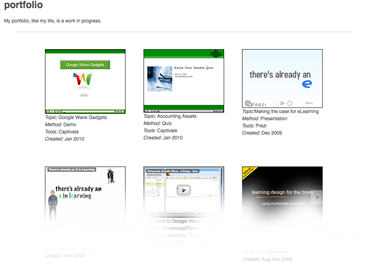In a changing world it’s hard to know what to pay attention to: Gen X, Gen Y, Gamers, the long tail? These broad trends don’t really help us design for specific sets of learners, in specific contexts.
So along comes Mark J. Penn with Microtrends: the small forces behind tomorrow’s big changes (2007), his new book outlining 72 microtrends — some of which could make your instruction more specific and more relevant to learners.
Working Retired
- There are over 5 million people 65+ in the workforce (in USA as of 2005), double the number in 1980
- 3 out of 4 boomers have no intention of seeking a traditional retirement

from inquisitr.com
The workforce is aging. In Europe, the aging of the workforce is even more extreme. (The median age in Europe will be 52.7 in 2050 — it’s currently 37.7!) Some people keep working because — guess what — they don’t have the funds to retire, maybe thanks to the recent economic collapse. Some people want to keep themselves active. People in general are living longer, and living better.
So what does that mean for learning? Older workers tend to be more resistant to eLearning, so will they require more face-to-face training? Perhaps it will just mean learning that’s adjusted to their needs, such as impaired vision or hearing. Or maybe the more experienced workforce will require less education overall, and instead will be a boon of teachers, mentors and subject matter experts. Or will younger workers get frustrated because there’s no room to grow? Or maybe the older workers will simply be part-time, or in less high-powered jobs and a different kind of educational challenge.
For every 2 million eligible to retire each year, what if 1 million decide to keep working? A microtrend becomes a major trend.
Extreme Commuters
- In 2000, 3.4 million people traveled at least 90 min to get to work

warrenwilliams.co.nz
The current average commute is 25 min (2005). But this sub-group of people travels 3x that amount! What do these people do on the road? There’s a great opportunity for audio-based learning — otherwise known as podcasts. Workers download at work and plug-in on the road. Maybe there can even be a dedicated XM channel — business learning for commuters. A series of 20 minute, well-produced, magazine format segments on leading business ideas. Or maybe just topics relevant to your organization or business.
Extreme commuters live in the exurbs for the most part — and this is can either be a lifestyle choice or economic choice. Either way — they have time on their hands and are a captive audience.
Numbers Junkies
Americans are fascinated with numbers and science. We don’t necessarily like doing math and science, but we do like watching it on TV. Numb3rs, CSI, Freakonomics — Americans go wild for math explanations, because they make us feel smart. These shows and books have million of viewers and readers.

numberjunkies.ca
“Science and technology are all around us, and we want it demystified” (307). We want the “aha” from the numbers — from the analysis and interpretation that helps make sense of the world, that gives us ideas on how the world works.
Apply it to learning. Incorporate unexpected analytics into your learning. Put in researched, relevant tidbits on how people learn, how your organization learns. How they compare others in the industry, perhaps.
Would they be interested to know that the non-profit sector has grown 2.5%, outstripping both business (1.8%) and government (1.6%), between 1970 and 2001? That in 2001, 6 million worked in non-profit, in 2001 that figure was 12.5 million?
Incorporating math and science into instruction gets people’s attention.
…I can’t resist one more…
Yes, yes — just one more! Is short attention span a MYTH?
- The average length of a top-ten best-selling book has increased from 385 page in 1995 to 485 pages in 2005 (think of all those book clubs!)
- 1/2 million people run marathons, triathlons and other long-attention sports
- 50 million Americans do cross-word puzzles
- The 30-min infomerical is a 90 billion/year industry (oh yeah, Ron Popeil rules!)
Just think about that. Are our attention spans really getting shorter?
Microtrends are small movements that hit 1% of the general population that suggest changes that could affect us tomorrow. These stats are from Microtrends by Mark J. Penn with E. Kinney Zalesne (2007, Hatchette Book Group.)
 See also Microtrends website.
See also Microtrends website.
If you’re interested in my annotated list of Microtrends, please send me an email (ranihgill -at- gmail) or leave a comment.


